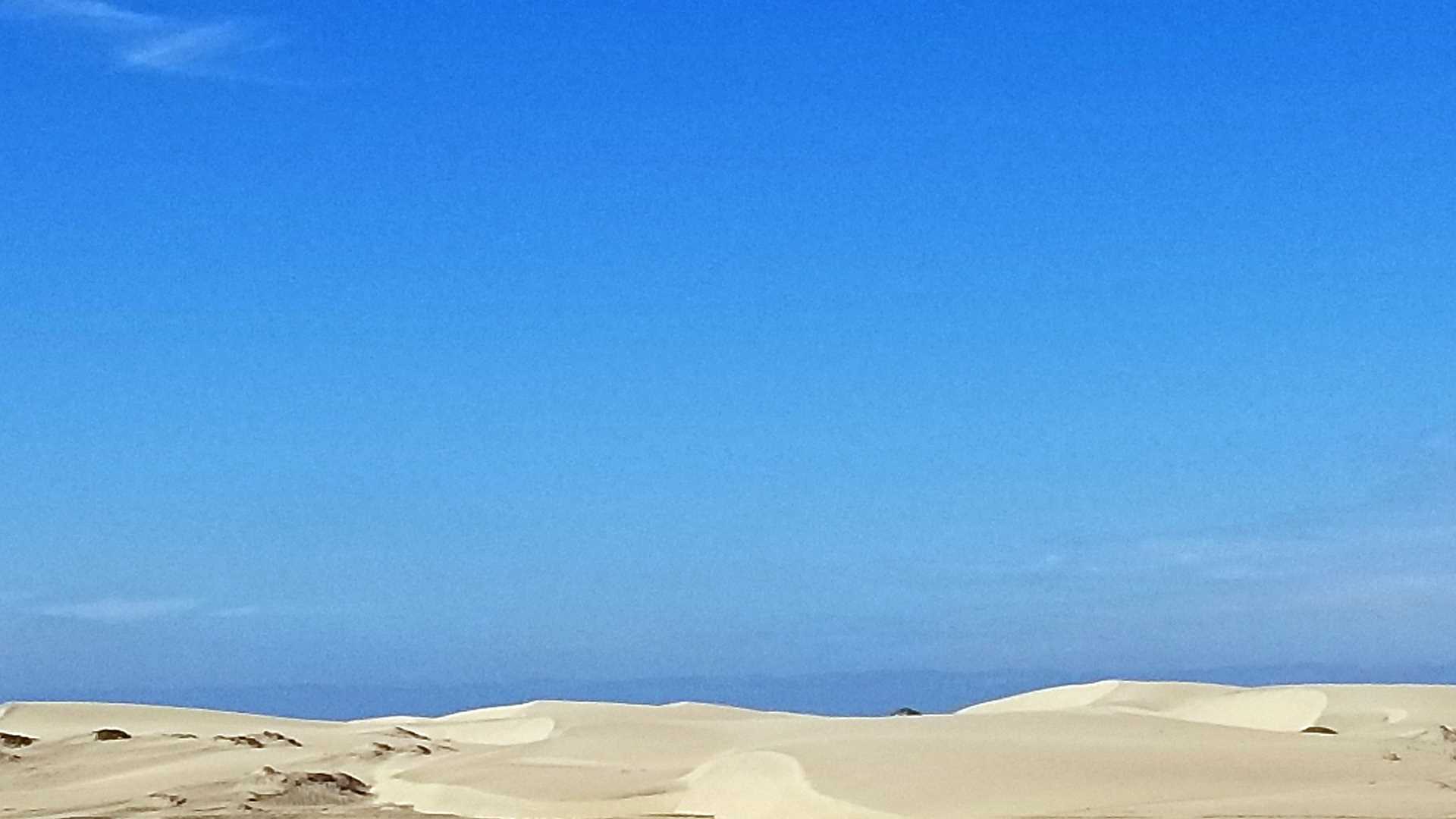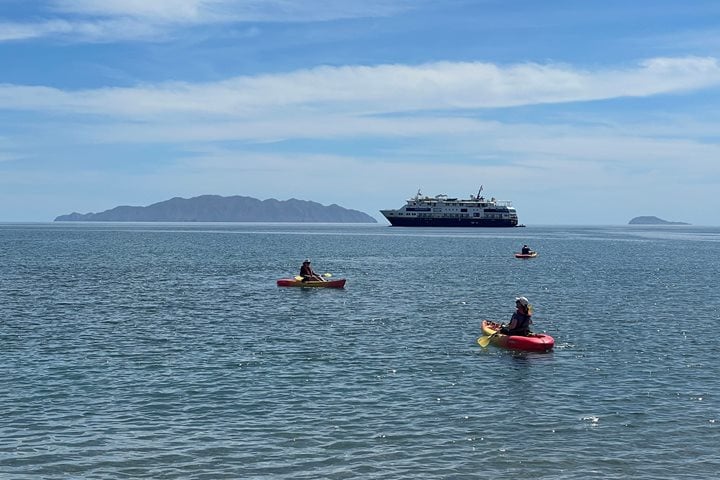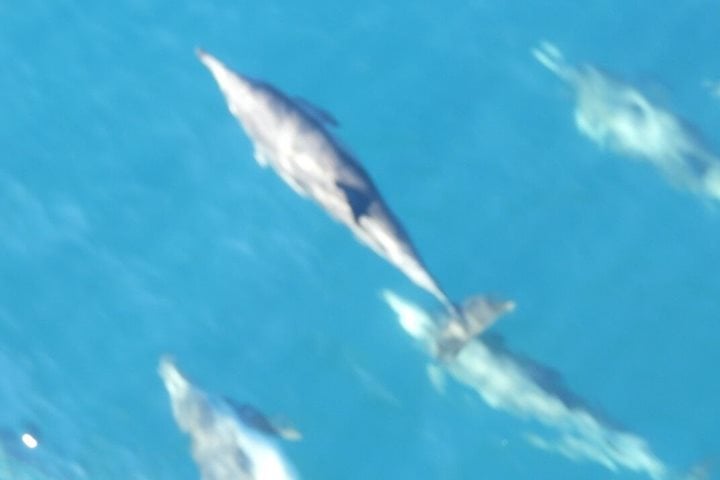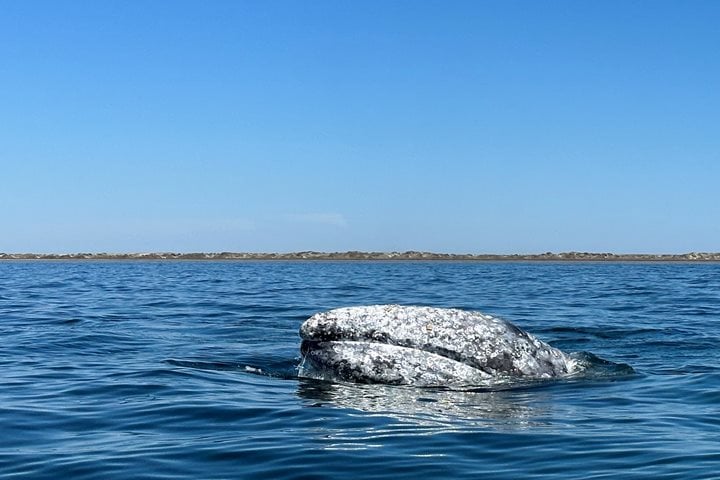We steamed south in the Hull Canal today, returning to Magdalena Bay. Along the way, we spotted the following: a gray whale cow and calf, dolphins riding our bow wake, coyotes on shore and various birds in the mangroves and mudflats. In the afternoon, we made our final landing on one of the narrowest parts of the peninsula, a small isthmus. With a short walk across the sand dunes, we arrived at the Pacific Ocean. We spent time on Sand Dollar Beach, which takes its name from the immense amount of sand dollars along the shore.
Call +1.800.397.3348 or contact your travel advisor







